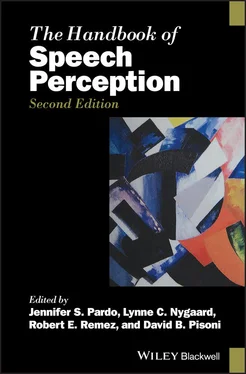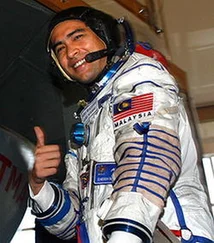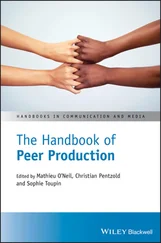67 Lee, S. A. S., Davis, B., & MacNeilage, P. (2010). Universal production patterns and ambient language influences in babbling: A cross‐linguistic study of Korean‐ and English‐learning infants. Journal of Child Language, 37(2), 293–318.
68 Leonard, M. L., & Horn, A. G. (2005). Ambient noise and the design of begging signals. Proceedings of the Royal Society B: Biological Sciences, 272(1563), 651–656.
69 Levelt, W. J. (1983). Monitoring and self‐repair in speech. Cognition, 14(1), 41–104.
70 Levelt, W. J. (2013). A history of psycholinguistics: The pre‐Chomskyan era. Oxford: Oxford University Press.
71 Liberman, A. M. (1996). Speech: A special code. Cambridge, MA: MIT press.
72 Lombard, E. (1911). Le signe de l’élévation de la voix. Annales des Maladies de l’Oreille et du Larynx, 37, 101–119.
73 Lombardino, A. J., & Nottebohm, F. (2000). Age at deafening affects the stability of learned song in adult male zebra finches. Journal of Neuroscience, 20(13), 5054–5064.
74 MacDonald, E. N., Goldberg, R., & Munhall, K. G. (2010) Compensation in response to real‐time formant perturbations of different magnitude. Journal of the Acoustical Society of America, 127, 1059–1068.
75 MacDonald, E. N., Johnson, E. K., Forsythe, J., et al. (2012). Children’s development of self‐regulation in speech production. Current Biology, 22(2), 113–117.
76 MacDonald, E. N., Purcell, D. W., & Munhall, K. G. (2011). Probing the independence of formant control using altered auditory feedback. Journal of the Acoustical Society of America, 129(2), 955–965.
77 Mahl, G. F. (1972). People talking when they can’t hear their voices. In A. W. Siegman & B. Pope (Eds), Studies in Dyadic Communication (pp. 211–264). Oxford: Pergamon.
78 Majorano, M., Vihman, M. M., & DePaolis, R. A. (2014). The relationship between infants’ production experience and their processing of speech. Language Learning and Development, 10(2), 179–204.
79 McGarr, N. S., & Harris, K. S. (1980). Articulatory control in a deaf speaker. Haskins Laboratories Status Report on Speech Research, 307–330. Retrieved August 4, 2020, from http://www.haskins.yale.edu/sr/SR063/SR063_18.pdf.
80 Messum, P., & Howard, I. S. (2015). Creating the cognitive form of phonological units: The speech sound correspondence problem in infancy could be solved by mirrored vocal interactions rather than by imitation. Journal of Phonetics, 53, 125–140.
81 Meyer, A. S., Huettig, F., & Levelt, W. J. (2016). Same, different, or closely related: What is the relationship between language production and comprehension? Journal of Memory and Language, 89, 1–7.
82 Miller, C. T., & Wang, X. (2006). Sensory‐motor interactions modulate a primate vocal behavior: Antiphonal calling in common marmosets. Journal of Comparative Physiology A, 192(1), 27–38.
83 Mitsuya, T., MacDonald, E. N., & Munhall, K. G. (2014). Temporal control and compensation for perturbed voicing feedback. Journal of the Acoustical Society of America, 135(5), 2986–2994.
84 Mitsuya, T., Munhall, K. G., & Purcell, D. W. (2017). Modulation of auditory‐motor learning in response to formant perturbation as a function of delayed auditory feedback. Journal of the Acoustical Society of America, 141(4), 2758–2767.
85 Muller‐Preuss, P., & Ploog, D. (1981). Inhibition of auditory cortical neurons during phonation. Brain Research, 215(1–2), 61–76.
86 Munhall, K. G., MacDonald, E. N., Byrne, S. K., & Johnsrude, I. (2009). Talkers alter vowel production in response to real‐time formant perturbation even when instructed not to compensate. Journal of the Acoustical Society of America, 125(1), 384–390.
87 Newman, R. S. (2003). Using links between speech perception and speech production to evaluate different acoustic metrics: A preliminary report. Journal of the Acoustical Society of America, 113(5), 2850–2860.
88 Nordeen, K. W., & Nordeen, E. J. (2010). Deafening‐induced vocal deterioration in adult songbirds is reversed by disrupting a basal ganglia‐forebrain circuit. Journal of Neuroscience, 30(21), 7392–7400.
89 Oller, D. K., & Eilers, R. E. (1988). The role of audition in infant babbling. Child Development, 59(2), 441–449.
90 Osberger, M. J., & McGarr, N. S. (1982). Speech production characteristics of the hearing impaired. In N. J. Lass (Ed.), Speech and language: Advances in basic research and practice (pp. 221–284). New York: Academic Press.
91 Pardo, J. S., Gibbons, R., Suppes, A., & Krauss, R. M. (2012). Phonetic convergence in college roommates. Journal of Phonetics, 40(1), 190–197.
92 Parks, S. E., Johnson, M., Nowacek, D., & Tyack, P. L. (2011). Individual right whales call louder in increased environmental noise. Biology Letters, 7(1), 33–35.
93 Peebles, D., & Cooper, R. P. (2015). Thirty years after Marr’s vision: Levels of analysis in cognitive science. Topics in Cognitive Science, 7(2), 187–190.
94 Perkell, J. S. (2012). Movement goals and feedback and feedforward control mechanisms in speech production. Journal of Neurolinguistics, 25(5), 382–407.
95 Perkell, J. S., Guenther, F. H., Lane, H., et al. (2004). The distinctness of speakers’ productions of vowel contrasts is related to their discrimination of the contrasts. Journal of the Acoustical Society of America, 116(4), 2338–2344.
96 Petkov, C. I., & Jarvis, E. (2012). Birds, primates, and spoken language origins: Behavioral phenotypes and neurobiological substrates. Frontiers in Evolutionary Neuroscience, 4, 12.
97 Pfenning, A. R., Hara, E., Whitney, O., et al. (2014). Convergent transcriptional specializations in the brains of humans and song‐learning birds. Science, 346(6215), 1256846.
98 Pick, H. L., Siegel, G. M., Fox, P. W., et al. (1989). Inhibiting the Lombard effect. Journal of the Acoustical Society of America, 85(2), 894–900.
99 Pickering, M. J., & Garrod, S. (2013). An integrated theory of language production and comprehension. Behavioral and Brain Sciences, 36(4), 329–347.
100 Plant, G. (1984). The effects of an acquired profound hearing loss on speech production: A case study. British Journal of Audiology, 18(1), 39–48.
101 Purcell, D. W., & Munhall, K. G. (2006). Compensation following real‐time manipulation of formants in isolated vowels. Journal of the Acoustical Society of America, 119(4), 2288–2297.
102 Scheerer, N. E., Jacobson, D. S., & Jones, J. A. (2016). Sensorimotor learning in children and adults: Exposure to frequency‐altered auditory feedback during speech production. Neuroscience, 314, 106–115.
103 Scheerer, N. E., Jacobson, D. S., & Jones, J. A. (2019). Sensorimotor control of vocal production in early childhood. Journal of Experimental Psychology: General, 149(6), 1071–1077.
104 Scheerer, N. E., Liu, H., & Jones, J. A. (2013). The developmental trajectory of vocal and event‐related potential responses to frequency‐altered auditory feedback. European Journal of Neuroscience, 38(8), 3189–3200.
105 Schmidt, R. A. (1980). Past and future issues in motor programming. Research Quarterly for Exercise and Sport, 51(1), 122–140.
106 Shiller, D. M., Sato, M., Gracco, V. L., & Baum, S. R. (2009). Perceptual recalibration of speech sounds following speech motor learning. Journal of the Acoustical Society of America, 125(2), 1103–1113.
107 Siegel, G. M., Pick, H. L., Olsen, M. G., & Sawin, L. (1976). Auditory feedback on the regulation of vocal intensity of preschool children. Developmental Psychology, 12(3), 255–261.
108 Sinnott, J. M., Stebbins, W. C., & Moody, D. B. (1975). Regulation of voice amplitude by the monkey. Journal of the Acoustical Society of America, 58(2), 412–414.
109 Skipper, J. I., Devlin, J. T., & Lametti, D. R. (2017). The hearing ear is always found close to the speaking tongue: Review of the role of the motor system in speech perception. Brain and Language, 164, 77–105.
Читать дальше








![О Генри - Справочник Гименея [The Handbook of Hymen]](/books/407356/o-genri-spravochnik-gimeneya-the-handbook-of-hymen-thumb.webp)



